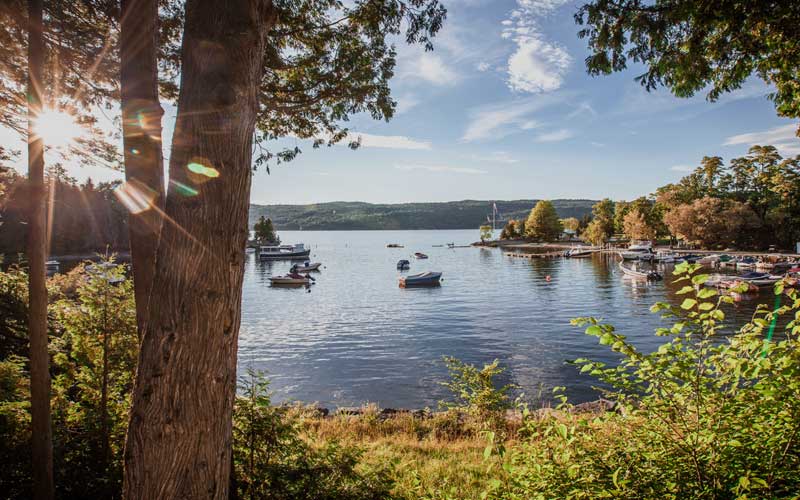
Lake Champlain. Photo: cmart7327 via iStock
September 2, 2020 (MONTPELIER, VT) – Vermont officials have issued the “Three Acre General Permit,” ending a two-year delay on a key piece of the state’s Clean Water Act and Lake Champlain cleanup plan. An essential component of Vermont’s clean water future, the permit will help spur the economy by catalyzing investment and jobs in improved infrastructure.
“Degraded water quality threatens public health, our economy, and our quality of life,” said Lori Fisher, Lake Champlain Committee Executive Director. “The Three-Acre General Permit implements one of the final regulations required by the TMDL. We thank the Agency of Natural Resources for taking this critical step towards cleaning up our waterways.”
“As Vermont works towards a rebound of tourism, clean water is a vital part of a healthy economy,” said Zack Porter, Lake Champlain Lakekeeper at CLF. “Future generations of Vermonters are counting on us to get this work done now, and officials have dragged their feet long enough. It’s time to get to work making sure this critical rule is properly implemented.”
“The issuance of the Three-Acre Permit is an important step towards better controlling stormwater discharges that are polluting Lake Champlain,” commented Jon Groveman, Policy and Water Program Director at Vermont Natural Resources Council (VNRC). “However, the hard work lies ahead to make sure that the permit is effectively implemented.”
Kathy Urffer from the Connecticut River Conservancy adds: “The release of this permit is welcome news. We’re grateful to the Vermont Department of Environmental Conservation for getting this across the finish line. The Connecticut River watershed waits in line behind the implementation of this permit in the Lake Champlain and Lake Memphremagog watersheds, so there’s no time to waste.”
According to the state’s own cleanup plan, developed lands – including impervious surfaces like parking lots, commercial and industrial sites, and other parts of the built environment – comprise just 3% of the land area of the Lake Champlain Basin, but contribute 18% of the total Lake Champlain phosphorus load. Vermont must achieve a 20.9% phosphorus reduction from developed lands, and the Three-Acre General Permit is necessary to achieve this.
Experts are available for further comment.
###
